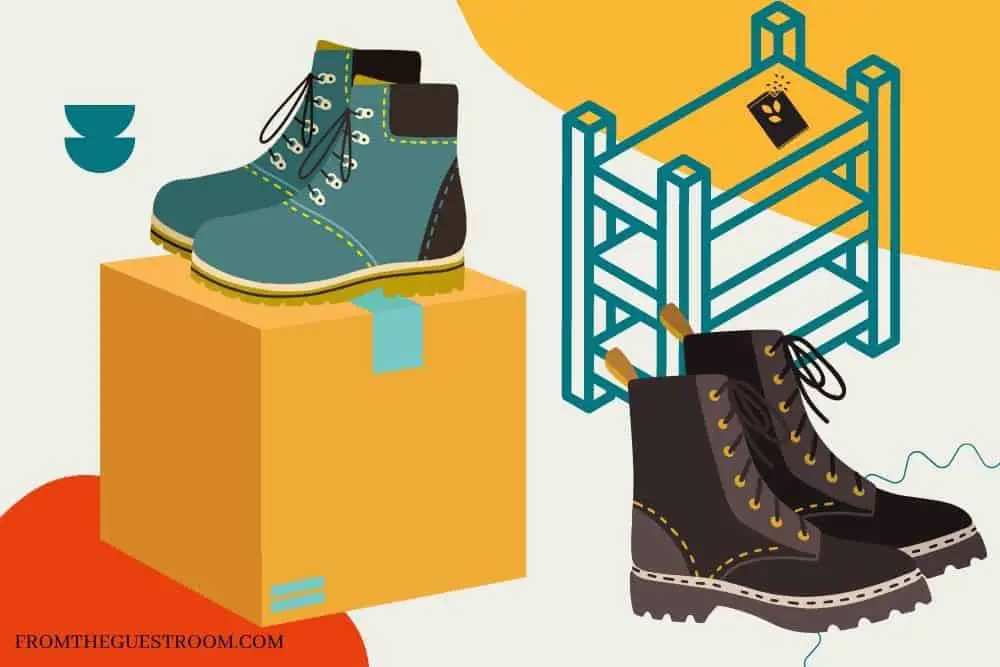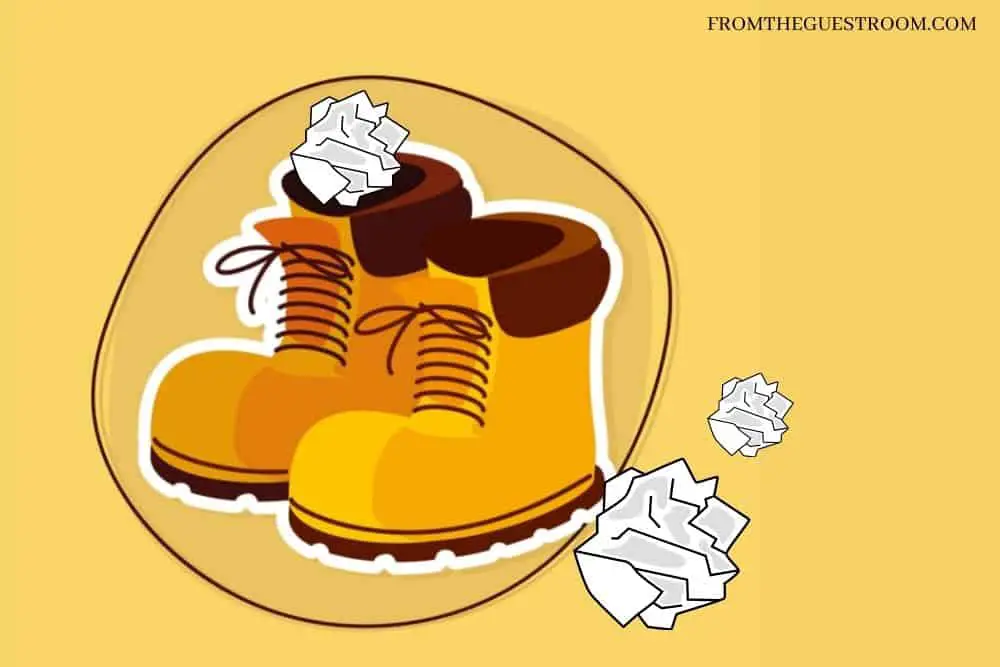It’s all fun going on hikes in your hiking boots, enjoying the scenery and the company of friends and family if you don’t hike alone. But sometimes, people ignore one important part of hiking, which concerns the boots.
Sure, everyone knows that you need to take care of hiking boots because that helps them last longer and look good every time you wear them. However, caring for your hiking boots does not only cover getting dirt out of them and cleaning them.
Storage is also important and helps contribute to the lifespan of hiking boots. After coming back from the trail, where should your hiking boots go?
Should you leave them by the door or drop them wherever until your next hiking trip? Or are you one of those people who shakes off the dust on their hiking boots when they are about to go on a hike?
Some people may even, at that point, start looking all over the house for them. But that is not healthy for your hiking boots. And due to their nature, you need to be careful with how you handle your hiking boots.
If you mishandle them, they just won’t last. So, what are the best ways to store your hiking boots? How about you read this article to find out? We will discuss ways you can store your hiking boots to help them last longer. And the good thing is, they are pretty easy!
Let’s get started!
Contents
How To Store Hiking Boots?
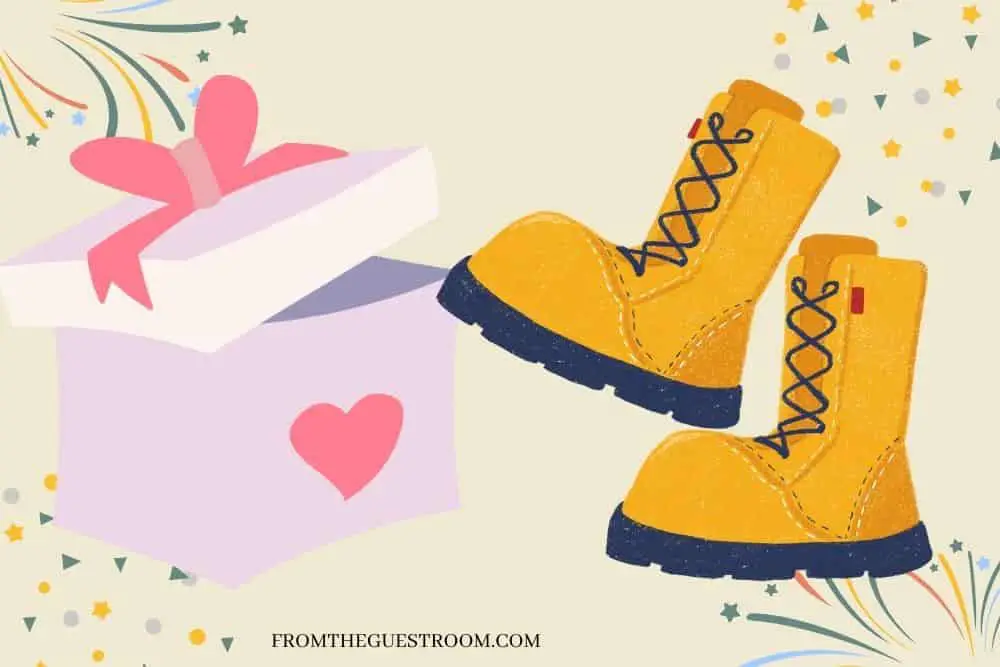
What’s the most important step before storing your hiking boots? Of course, it is cleaning your hiking boots and ensuring they are in a good state for storage.
First, you need to clean your hiking boots using water, soap, and a brush. Before storing them, you need to get rid of the dirt and grime from hiking boots.
If you don’t do that, it slowly ruins your hiking boots, and it makes them smell. As much as cleaning is important, you should know the kind of soap or brush that will work for your hiking boots’ material without ruining them.
Mild soap works okay for most hiking boots, and use a soft brush with warm water. After you’ve finished cleaning, make sure to let them dry completely before doing anything else, and there are several safe ways to do so.
After cleaning, you should condition your hiking boots, especially if their material is leather. It helps to keep them healthy and makes them look good.
Furthermore, it helps the leather retain its moisture, preventing cracking. Then, if your hiking boots need some polishing to make them shine, this is where you do that.
Some conditioners work well in improving the looks of your hiking boots, and likewise, some polishes also help condition hiking boots. So, you may choose a product that can do both.
Either way, before you store your hiking boots, you need to spray them with an antifungal product to prevent mold, bacteria, or fungi from forming on them before you take them out for a hike. You could also keep some deodorizing products in them if you want.
Now, enough with the preparation of your boots before storage. After you are done with all of that, where do your hiking boots go?
Do they just lie around till whenever? Absolutely not! The following are some of the ways you can store your hiking boots before your next hiking trip:
1. Arrange on a boot rack
- SAVE YOUR PRECIOUS BOOTS!! No more creases and scuffs from being left on your closet floor so you...
- Reclaim your space – this boot rack stores 5 pairs of boots in just 7 inches of closet space
- Fits any kind of boot up to knee high and does the job of a boot hanger, boot shaper and boot tree
Last update on 2023-11-11 / Affiliate links / Images from Amazon Product Advertising API
Once your hiking boots are clean, conditioned, polished, and ready for storage, you can store them on a boot rack. This is a better option than arranging them on the floor or placing the boots over one another.
While they may be clean, they are not safe for your hiking boots. Putting them on a boot rack will help the boots stay alone and get adequate ventilation.
This makes this method one of the best and easiest ways to store your hiking boots. It is more ideal this way.
Cluttering or leaving them lying around the house is not good for you, your hiking boots, or your home. The good thing is that boot racks can hold multiple pairs of hiking boots if you have more than one.
In addition, this will help keep your hiking boots in shape until your next hiking trip. It also helps keep them off the floor, where they are vulnerable to moisture.

You can use this method to store leather, mesh, or other types of hiking boots, and they will be good to go when you need to use them. With this, you don’t need to sift through your closet to get your boots out.
You just take them off the rack, use them, and replace them after you are done. It is most effective for short-term storage.
Boot racks can be either horizontal or vertical and made from different materials like bamboo or metal. You should always remember that you need to store your hiking boots when they are totally moisture-free.
Pros
- Good storage option.
- Helps organize your hiking boots.
- Keep hiking boots in shape till the next hiking adventure.
- It can hold multiple pairs of hiking boots.
- Protects hiking boots from moisture.
- It is long-lasting.
- Helps ensure hiking boots get adequate ventilation.
Cons
- Leaves hiking boots exposed to dust.
- Not the best long-term storage for hiking boots, as they are prone to dirt.
2. Stuff with wads of papers
Another way to store hiking boots safely is to stuff them with wads of paper. Storing your hiking boots is not limited to you hanging them on boot racks, keeping them in your closet, or other fancy tools.
When they are not available, what will you do? Abandon your hiking boots or leave them be? Of course not, and here is one easy, simple, and inexpensive way to store your hiking boots.
This will help your hiking boots stay in shape and free of moisture. However, you should know that the best type of paper to stuff in your hiking boots is acid-free paper instead of paper with prints on it.
It will help protect your hiking boots from deteriorating and help maintain their moisture level. But if you have newspapers available, you may use them as well; they will serve the same purpose.
And if you don’t have newspapers or acid-free paper at home, you can use bottles or unbleached muslin fabric.
This method of storing your hiking boots is good for leather and mesh materials and helps absorb residual moisture in your hiking boots, so they don’t smell when you wear them.
You can use this method for short-term or long-term storage.
Pros
- Helps keep hiking boots dry.
- Can help stretch hiking boots while at it.
Cons
- Does not do much for covering the outside of hiking boots.
- Leaves hiking boots prone to accumulating dust.
- You may need to combine with other storage methods.
3. Keep them in boot storage boxes
- MULTI-PURPOSE STORAGE SOLUTION - Ideal for storing not only boots but also clothes, books, toys, and...
- MAKE SPACE FOR MORE - Our stackable boot organizer clears up clutter and maximizes your storage...
- VENTILATED DESIGN - Protect your belongings from dust and moisture with our stackable shoe storage...
Last update on 2023-11-11 / Affiliate links / Images from Amazon Product Advertising API
This is one of the most common, best, and safest ways to store hiking boots. If you would rather not have to shake or brush off dirt or dust on your hiking boots on the day you hit the trail, then you should consider this storage method.
You can store your hiking boots with storage boxes for a long period. For instance, if you have more than a pair of hiking boots for different terrains or weather, you can store them with this if you don’t need them.
Keep your winter hiking boots safely in storage boxes and take out your summer boots or lightweight boots for a hot day hike or something relaxing. Your boots can stay there all summer until you need to use them again.
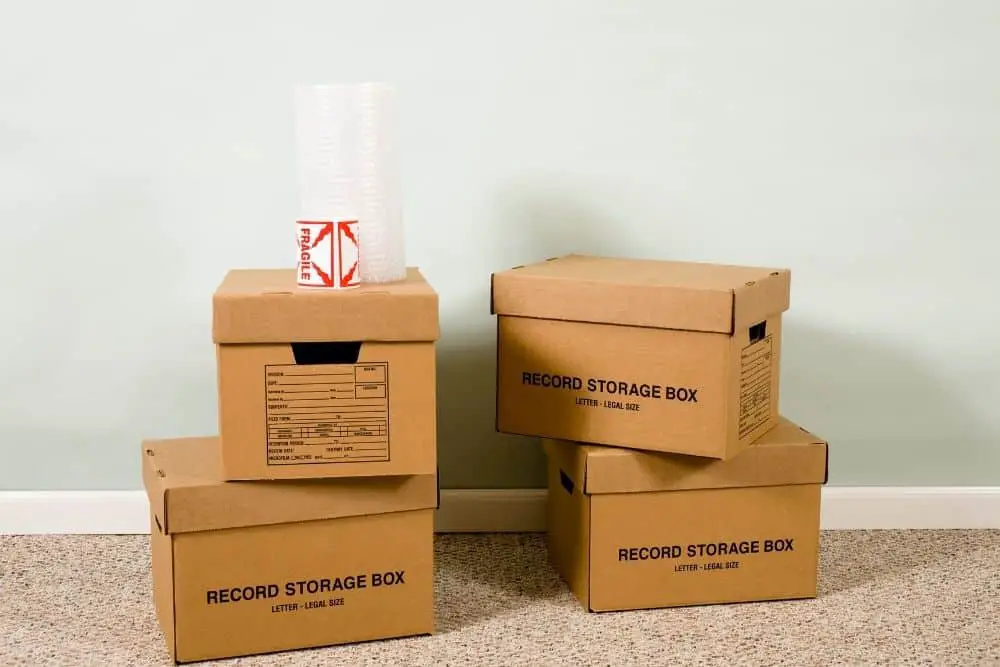
When getting boot storage boxes, ensure you go for ones with vented holes on them to ensure that they get enough ventilation. Without that, your hiking boots will be exposed to heat and moisture.
What’s more? The heat could ruin your hiking boots, and moisture can make them stink. Vented boot storage boxes also help ensure that your hiking boots stay dry throughout the period you keep them there.
Since your hiking boots will be the only items in the boxes, it allows them to maintain their shapes without creasing or bending. After putting your boots in the boxes, you can place them in a safe place in your home.
Pros
- Keep hiking boots dry for a long period.
- It is a sure long-term method of storing boots.
- Helps ensure hiking boots stay in shape till the next usage.
- Protects hiking boots from dust.
Cons
- Hiking boots don’t get adequate ventilation.
- Boxes are prone to building up moisture, exposing your hiking boots to that.
4. Use boot shapers
Last update on 2023-11-11 / Affiliate links / Images from Amazon Product Advertising API
Boot shapers are another good way to store your hiking boots. If you don’t have many pairs of hiking boots, boot shapers are ideal for keeping your boots in good shape until the next time you need them.
Like the other methods we have mentioned, they are pretty effective in storing your hiking boots. What do they do? First, they help keep moisture from your hiking boots.
So, if your hiking boots were not completely dry before storing them, you can count on boot shapers to help you out. You should probably consider getting boot shapers made from cedar trees because they are very good for boots.
Apart from keeping moisture away from your boots, they help ensure that your hiking boots don’t smell while not in use. You know, cedar trees leave a nice, sweet smell in hiking boots. As in its name, it helps hiking boots maintain their shape while not in use.
Pros
- Helps hiking boots maintain their shape.
- Can help de-stink hiking boots.
- Keeps moisture from hiking boots.
Cons
- It exposes hiking boots to dust.
- Not exactly suitable for long-term storage.
- Cannot store many pairs of hiking boots.
5. Boot trees
- 2 PAIRS - PREMIUM TOP QUALITY - We use the very best American Grown Aromatic Red Cedar that absorbs...
- RIGHT and LEFT marks are engraved on each pair of HOUNDSBAY Shoe Trees to make it easy to use the...
- A WIDE HEEL with a Comfortable Hook Handle is important to properly preserve the shape of the back...
Last update on 2023-11-11 / Affiliate links / Images from Amazon Product Advertising API
Boot trees are very popular with people who use hiking boots. At some point, you will have heard or read about their benefits and how well they can serve your hiking boots.
And one of those ways is storing your hiking boots. This storage method is very popular as you can leave your hiking boots on the boot trees when you are not using them.
While they help store hiking boots, they also help ensure they maintain or restore their shape for more comfortable usage. Furthermore, they help keep hiking boots dry and moisture-free when not in use.
You should probably invest in some boot trees if you own hiking boots; maybe it’s best to get them at the point of purchase. Lastly, they help to ensure that your hiking boots don’t smell before your next hiking adventure.
Pros
- Boot trees serve multiple purposes, like stretching, drying, and de-stinking hiking boots.
- A good way to store hiking boots long-term.
- Boot trees are moisture absorbing and can help keep hiking boots dry.
- It helps prevent hiking boots from smelling.
Cons
- Can’t protect the outside of hiking boots from dust.
6. Leave in a warm, dry environment
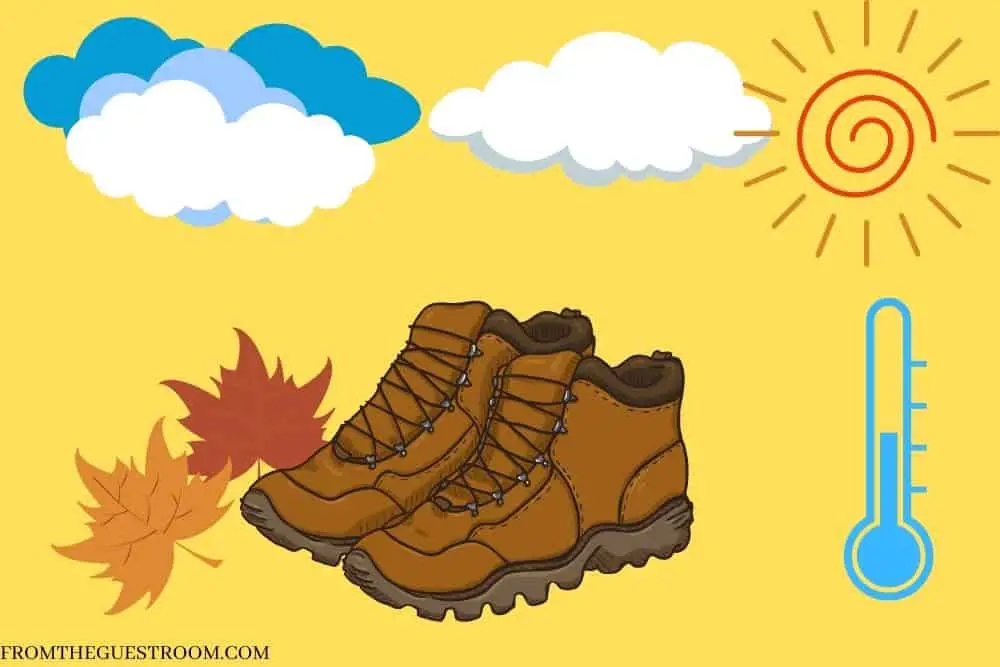
This is probably the most convenient and inexpensive way to store your hiking boots. If you would rather save yourself the stress of getting boot stands, trees, or boxes, then you don’t have to.
Similarly, if you cannot afford them, you can store your hiking boots at home without tying them to anything. However, this is different from you loitering around your home with hiking boots or mishandling your hiking boots.
It also does not mean that you should keep them anywhere. Whether you keep them in your closet, shoe compartment, or anywhere else in your home, make sure it’s warm, dry, and well ventilated.
In addition, it should be a place free from moisture, heat, or that is easily accessible. Doing this will help protect your hiking boots from moisture while still leaving them dry.
However, it does not do much for their shape, so maybe you can stuff them up with paper, muslin fabric, bottles, or boot trees if they are available.
Pros
- It’s safe and does not require much.
- Keeps hiking boots away from moisture.
- Ensures hiking boots stay dry for a long period.
Cons
- Specks of dust can cover up hiking boots in no time.
- You have to stuff boots up to maintain their shapes.
7. Add silica packets
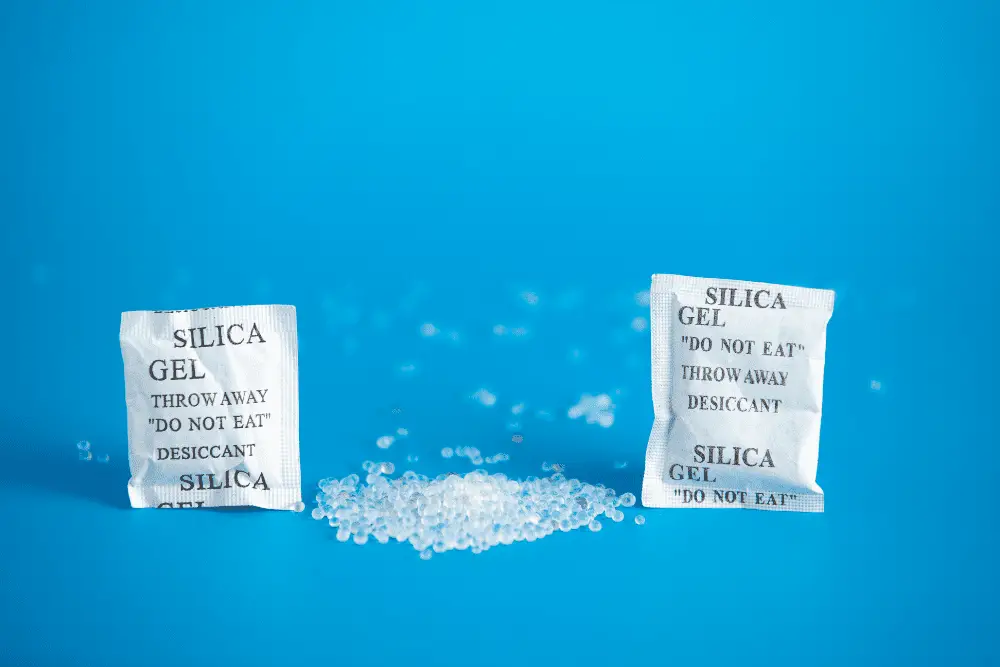
You can store your hiking boots by keeping silica packets in them till the next time you use them. They will help absorb moisture in your hiking boots, especially if they are lightweight.
Lightweight materials tend to be more fragile than heavy hiking boots and other tough hiking boots. Since moisture can ruin them if they stay too long in your hiking boots, you should prevent that from happening.
One of the most reliable ways you can do that is by using silica packets. Usually, silica packets come with boxes of shoes to keep them dry until you open them for use.
Furthermore, it helps to prevent mold from forming in your hiking boots and, at the same time, stops your boots from smelling. You can use the ones that came with your boots or other shoes for this purpose.
While this is good for keeping moisture from getting into hiking boots, it doesn’t do much to protect them. First, it exposes your boots to dirt, and second, it does not help maintain their shape.
Pros
- Good for keeping moisture away from hiking boots.
Cons
- Does not protect hiking boots from dust or other external forces.
- Can’t help maintaining hiking boots’ shape.
- You would probably need to combine this with other storage methods.
- Not suitable for long-term storage.
Conclusion
Where and how to store hiking boots is very important. Should you store them immediately after a hiking trip, or do you need to clean them before you do so?
Of course, you should store your hiking boots in their cleanest and finest state to avoid any issues. The answer to the “how” further extends to using boot trees, shapers, stuffing with paper, and many other similar options.
Then, there is the revelation that the floor of your home is not always the best place to store your hiking boots. But more than that, caring for your hiking boots when not in use is the most important thing.
Cleaning, conditioning, polishing, disinfecting, and deodorizing are also ways to store your hiking boots, so don’t leave them out. You should not skip them and instead store your sand cakes and hiking boots in a boot box.
It won’t help your hiking boots in the long run. Therefore, always ensure your hiking boots are clean, and then you are free to store them using any of the methods we mentioned above.
You can decide which method to go for depending on your budget and how long you need to store them, plus the hiking boots’ material. Properly storing your hiking boots pays off in the long run; it saves you from buying new boots within a short period of time.
Good luck!

